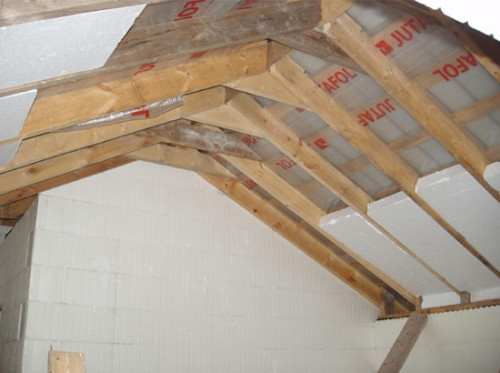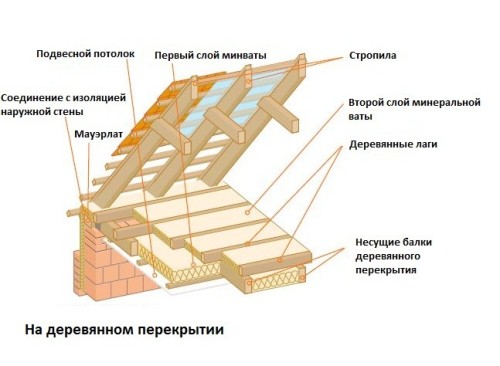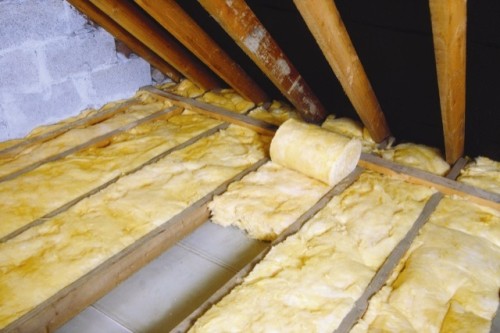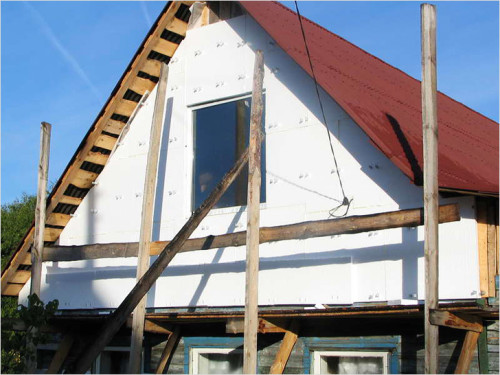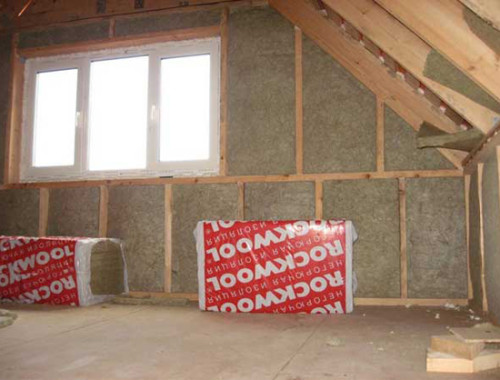Any unsuitable room in winter becomes unsuitable for a comfortable life in it, moreover, this threatens the speedy damage to the material of the walls, internal and external decoration, since the absence of insulation will lead to the formation of condensate. In the case of the attic, the situation is even more fat - since the room is located on the very top floor under the roof, the whole heated air from the house will rise there and ... freely go outside. Thus, you can neither use the attic for housing, nor how to through the house. To prevent this from happening, during the construction of the attic, you need to immediately take care of its insulation, and in this article we will tell you how to do it.
Content
The choice of thermal insulation material for the attic
Getting to insulate the attic, it should be realized that this room will always be colder than below, since there is no “heat pillow” above it. For this reason, thermal insulation work needs to be given maximum attention, starting from the choice of material, ending with compliance with the technology of its installation. In the modern construction market, you can find a lot of good heater, but in most cases the owners are looking for what cheaper, guided only by this factor. Fortunately, there are some good options for economical construction.
Consider the most popular heater:
- Glass wool - start with the cheapest insulation. Fiberglass material does not burn and does not support combustion, which satisfies all fire safety rules. It does not contain harmful chemicals or organics, and as for thermal conductivity, then it is quite low, if, of course, lay the material correctly. The only serious drawback of glass wools is difficult to work with it. To do this, you will need to completely close all parts of the body, put on glasses and a respirator, because if the particles of the material enter the skin, mucous membrane or the respiratory tract, this will cause severe irritation. Remember - if you decide to insulate the attic with cheap glass, you will have to spend on protection.
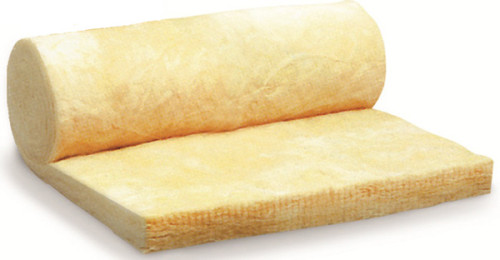
- Mineral wool - this material, unlike glass wool, is not dangerous for humans and does not cause skin irritation in contact. In addition, he has thermal protection indicators higher, but it costs not much more. Mineral wool, as you can guess by name, consists of minerals, that is, rocks processed and turned into the finest fibers compressed by each other. This method of production allows you to get a fairly easy and convenient to use insulation with low thermal conductivity. Plus, she has good noise protection, so she is often used for soundproofing drywall partitions. On sale, mineral wool can be found in rolls or in plates (more expensive stoves). Rolled materials will be convenient for insulation of the attic floor, and slab - walls and ceiling. The insulation of the attic in mineral wool is also good because the material, roughly speaking, is made of stones, so it does not burn and does not support combustion. Along with this, it is quite durable and elastic, so the slabs can be squeezed between the rafters and not strengthened additionally.
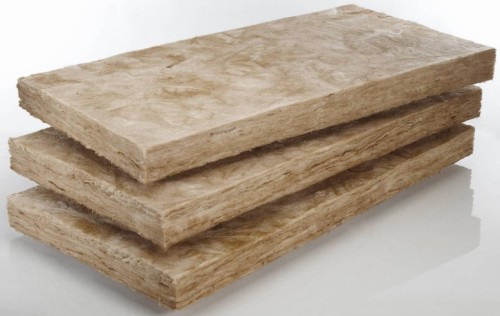
- DVP - this material most often serves as a heat insulator for the attic built over baths or saunas. It’s just to work with the slabs, and over time they are not deformed. Since the fiberboard has a completely smooth surface, this saves on alignment before finishing. Unfortunately, thermal insulation is quite weak, therefore, for residential premises, the material is not used or combined insulation is done with its participation, for example, mineral wool+foam or foam+fiberboard.
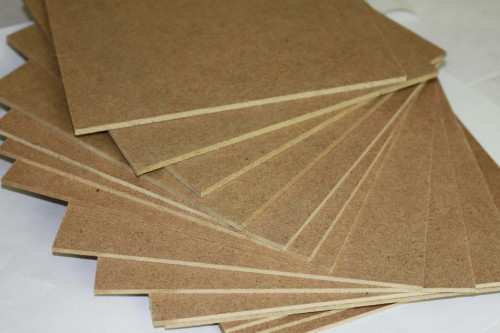
- Foam is a completely universal material actively used for insulation of anything. Depending on the thickness and density, it can have a different coefficient of thermal conductivity. Ordinary foam is very inexpensive, it is easy to work with it, it does not burn, but it does not “breathe”, needs good waterproofing and serves no more than 15-20 years. Despite this, insulation of the attic with polystyrene is a common practice. However, its more modern derivatives, such as extruded polystyrene foam more durable and durable. They are more expensive than ordinary foam, but their thermal conductivity is much lower. In the article "Technology of insulation of polystyrene foam" You can find a lot of useful information.
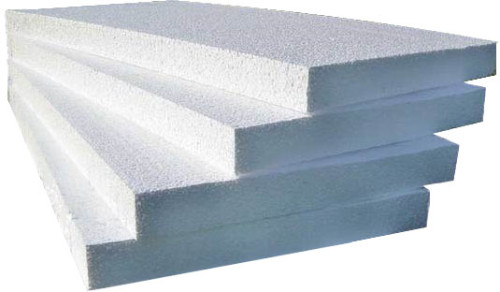
- Poliuretan foam is a highly effective thermal insulation material that is suitable for high -quality insulation of any surfaces, not uneven ones. Unfortunately, it is impossible with it with your own hands with a polyurethane foam, since it is applied with spraying, and this requires special equipment and skills in handling it. But as a result, you get a monolithic layer of insulation, which is not afraid of moisture, damp and thickness is a few centimeters, so that you will not lose precious quadrature, as in the case of polystyrene or mineral wool, to be insulated from the inside.
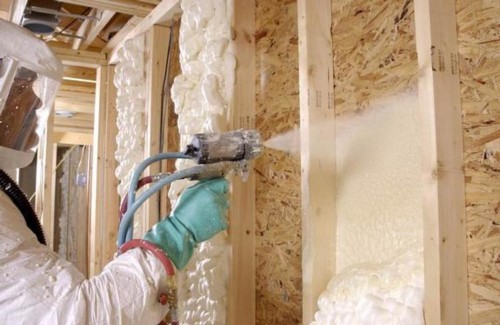
- Ecowata is another sprayed insulation that will give reliable and durable protection against cold and heat. The most important quality of the material is environmental friendliness. In terms of properties, it resembles natural wood - it does not prevent air microcirculation, does not contain harmful chemicals, and is not deformed during operation. Ecowata is made of redesigned paper and is absolutely safe for the health of people, animals and the environment.
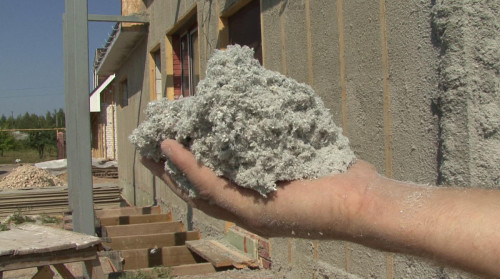
- Foil materials are a number of insulation, one or two sides of which are covered with foil. It serves to reflect heat back into the room, so if you bought one -sided material, lay it with an aluminum layer inward. It is important to observe one rule: between the internal casing (drywall, plywood, fiberboard) and the insulation need to lay vapor barrier and leave the gap of 3-5 cm so that the condensate can evaporate freely. If you use a bilateral membrane, the gap can be reduced to 1 cm.
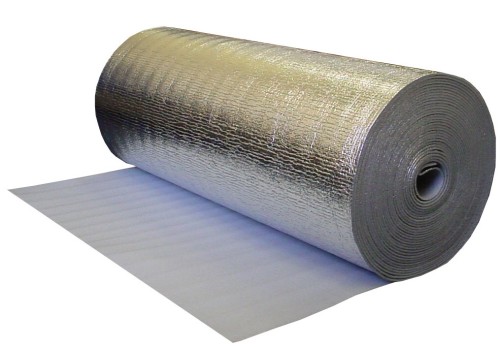
The technology of insulation of the attic
It is necessary to choose the thermal insulation material, starting not only from your financial capabilities, but also from the method of insulation.
In the case of the attic, this can be done in several ways:
- Putting the insulation between the rafters is the easiest way to warm the attic from the inside. For this, plate materials are mainly used, for example, polystyrene foam, polystyrene or mineral wool. It is enough to fix the insulation between the rafters and at the same time you will get a ventilation gap between the roof, heat and waterproofing layers. If you use this method, keep in mind that the thickness of the insulation plates should correspond to the thickness of the rafters. In this regard, mineral wool is most convenient because it can be compressed.
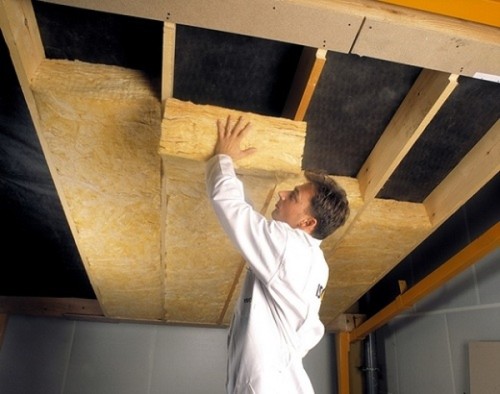
- Put the insulation above the rafters - this method will allow you to save a useful space inside the attic and use the rafters as an original decoration of the interior.
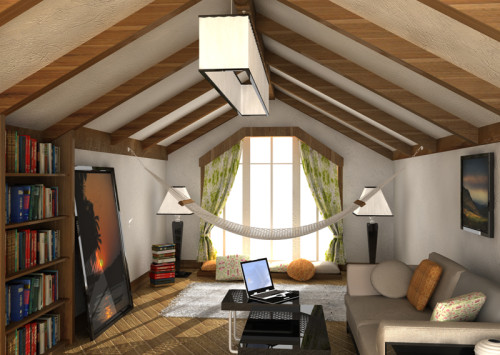
The insulation of the roof of the attic
Since almost always the roof of the attic has several slopes under the slope, they need to be insulated with a material that is not deformed over time and with which it is convenient to work at altitude. Rolled mineral wool is not quite suitable for this and it is better to use slab materials.
For high -quality insulation of the roof of the attic from the inside, insert the slabs between the rafters or above the rafters. In the second case, laying the crate will be required. If you live in the region with a cold climate, you can make additional thermal protection by laying the plates and under the rafters (also attached with a crate). If the width of the plate is not enough to fill the entire space between the rafters, and there remains a small gap, fill it with a segment of similar material, adding 2-3 cm in width to squeeze it in the width. Over time, any material gives a shrinkage, so it is necessary to immediately compensate for this distance.
Useful advice: special attention should be paid to the thermal insulation of the skate, yends and overhangs. In these places, there is always a large risk of leaks and the formation of cold bridges, since the plane of the roof in them changes its shape. Risk places also include the points of the roof with the walls and window openings.
Enlargements of attic
A house with an attic can be erected with one of two types of floors: reinforced concrete or wooden. If your house has reinforced concrete floors, and the floors are covered with tiles or bulk, it is necessary to use a particularly strong heat -insulating material. In addition to the strength, it should have a high level of noise protection, so for such cases the best option will be extruded polystyrene foam. Sprayed thermal insulation is also suitable, but with your own hands not to cope with such work.
If the floors in the house are reinforced concrete, but semi -mined on the lags, basalt mineral wool in the slabs is perfect as a heater. In the corners of the attic, it is recommended to leave small ventilation holes. And so that extraneous noises do not penetrate through the ceiling, the lags should be installed on special elastic gaskets from noise -absorbing material.
If you live in a completely wooden house with wooden ceilings, above or under them you need to build a black floor on which the insulation is laid. At the same time, the blackboard boards should not be fixed so that when shrinking the house and seasonal movements of wood, they freely “go” and not deformed. Put the boards, put construction polyethylene on them, and on top of it - a heater. It is also advisable to lay the film on top so that if you spill water to the floor, it do not damage the heat -insulating layer. Next, such a black floor can be covered with sheets with moisture -resistant plywood and lay the finish layer: laminate, parquet, linoleum, carpet, etc.
It is easiest to cope with floor insulation. To do this, you can use cheaper rolled heaters, rolling out the material over the entire surface close to the lags.
The insulation of the pediment of the attic
You can also warm the pediment in one of three ways, depending on the design features of the building. For example, if the house is erected using layered masonry, thermal insulation material must be placed inside this masonry. Outside will be a cladding, and inside there is a supporting wall. For such work, the best option would be basalt wool in the slabs. On both sides, it is recommended to lay vapor barrier (at least elementary made of Pergamine) in order to prevent the warming of the insulation with condensate.
If the house is built using the “ventilated facade” technology, basalt wool slabs should also be used. Between the insulation and the inner side of the cladding, the distance of at least 4 cm (up to 15 cm) should be maintained. To do this, on top of thermal insulation, a crate of wooden beams or rack aluminum profiles is attached. Such a ventilation gap not only contributes to the effective evaporation of condensate, but also creates an additional air pillow that enhances thermal protection of the house.
Useful advice: if you decide to warm the pediment with polystyrene, the article will be useful to you "Warming the facade of the house with polystyrene".
If the pediment is plastered, it can be insulated with polystyrene foam or stone -water slabs, since it is important to create a solid and geometrically stable surface. If it is impossible to insulate the walls of the attic walls outside, you will have to work from the inside. However, it should be taken into account the displacement of the dew point into the walls. This means that the insulation will need additional hydro- and vapor barrier to prevent the accumulation of condensate. Also, with internal insulation, it is almost always necessary to sacrifice space, and the scale of these victims will depend on the chosen insulation and the technology of laying it. In the case of mineral wrecking plates, you will first attach a windproof membrane, vapor barrier, insulation to the wall, then build a crate and already nail a drywall or plywood to it to proceed with the interior decoration. Between the inside of the crate and thermal insulation, it is necessary to leave a gap of 3-5 cm. In any case, insulation from the inside is undesirable and should act as the last option, when external insulation is impossible for some reason.
Finally, we offer to get acquainted with useful videos about the insulation of the attic and its full arrangement:

